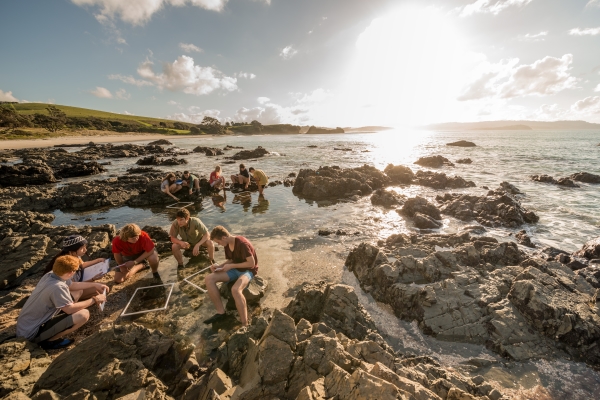|
The technical seminar aimed at surveyors, spatial professionals, students and operational geodesists who are interested in learning more about practical aspects of reference frames from some of the world’s leading geodesists and geodetic surveyors. As well as covering reference frame basics, the two-day seminar focused particularly on dealing with deformation and datum unification. The Technical Seminar Reference Frame in Practice - Reference Frames, Datum Unification and Kinematics was held at the Rydges Latimer in Christchurch, New Zealand, on 1-2 May 2016 in conjunction with the 78th FIG Working Week 2016, 2-6 May 2016. The seminar was organized by IAG (International Association of Geodesy), FIG (Fédération Internationale des Géomètres), UN-GGIM-AP (UN Global Geospatial Information Management for Asia and the Pacific), ICG (International Committee on GNSS) and NZIS (New Zealand Institute of Surveyors). The seminar was attended by over 50 participants from 18 countries. Five participants were funded by the International Committee on Global Navigation Satellite Systems (ICG) United Nations Office for Outer Space Affairs (UNOOSA).
The funded participants together with Convenor Mr. Nic Donnelly, New Zealand.
Group photo |
The event is supported by -
![]()

![]()
Sunday 1 May 2016 |
|
08:30 – 09:00 Welcome and Opening Remarks Mr. Nic Donnelly (Convenor), Prof. Rudolf Steiger (FIG Council), Prof. Volker Schwieger (FIG Comm 5), Mr Gary Johnston (IAG), Dr. John Dawson (UN-GGIM-AP), Miss Rachelle Winefield (NZIS) |
|
09:00 – 10:30 Session 1: Introduction to 3D Reference Frames / Datums Prof. Chris Rizos (Australia) -
presented by Mr Nic Donnelly (New
Zealand) |
|
10:30 – 11:00 Morning Tea |
|
11:00 – 12:30 Session 2: Introduction to Vertical
Reference Frames / Datums |
| 12:30 – 13:30 Lunch |
|
13:30 – 15:30 Session 3: Kinematic Frames and Deformation Modelling Dr Chris Pearson (New
Zealand): Dr Chris Crook (New
Zealand): |
|
15:30 – 16:00 Afternoon Tea |
|
16:00 – 17:30 Session 4: Case Studies 1 Mr Basara Miyahara (Japan) and Dr
Koji Matsuo (Matsuo): Dr Dan Roman(United States): Mr Graeme Blick (New Zealand): |
|
19:00 – 22:00 Seminar Dinner – Rydges Latimer |
Monday 2 May 2016 |
|
09:00 – 10:30 Session 5: Case Studies 2 Brief Datum Case Studies – ICG-supported delegates Charisma Cayapan
(Philippines) Joanna Kuczynska-Siehien
(Poland) Andrick Lal (Fiji) Niraj Manandhar (Nepal) Asakaia Tabuabisataki
(Fiji) Dr John Dawson(Australia): Mr Neil Ashcroft (Singapore) – Presentation
on behalf of Leica Mr Paul Drummond (New Zealand) –
Presentation on behalf of Trimble |
|
10:30 – 11:00 Morning Tea |
|
11:00 – 12:30 Session 6: International Geodesy Initiatives Dr John Dawson(Australia): Mr Larry Hothem (United States): Mr Nic Donnelly (New Zealand): SNAP Least
Squares Adjustment Software |
|
12:30 – 13:30 Lunch |
|
13:30 – 15:30 Session 7: Geodetic Infrastructure and GIS Mr Richard Stanaway (Australia): Ms Ruth Neilan (New Zealand): Dr Suelynn Choy (Australia): |
|
15:30 – 16:00 Afternoon Tea |
|
16:00 – 17:30 Session 8: Geodetic Software Dr John Dawson (Australia): Mr Ryan Ruddick (Australia): Dr Chris Pearson (New Zealand): |
|
17:30 Closing Remarks – FIG Commission 5 |
